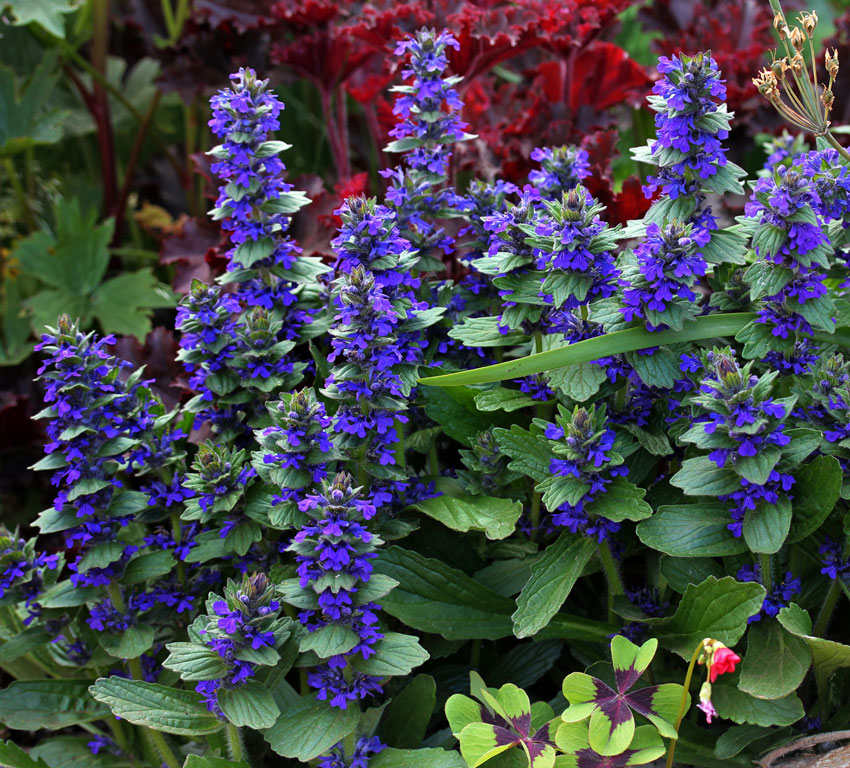Pyramid Bugle
(Ajuga genevensis)

Description
Pyramidal bugle is a perennial, herbaceous plant growing from about 5 to 20 cm (2 to 8 in) tall. At the base there is a rosette of stalked leaves which are significantly larger than the stem leaves. The stiff upright hairy stem is square and bears simple leaves growing in opposite pairs. They are ovate, hairy above and below and have a slightly wavy edge. The inflorescence has leaf-like bracts subtending the individual flowers. The bracts gradually get smaller towards the tip of the inflorescence, are always longer than the flowers and the upper ones are often tinged purple. The inflorescence forms a pyramid-shaped terminal spike and is formed of axillary whorls. The calyx of each flower is five-lobed, the bluish-violet corolla has a long tube and is fused, with two lips. The upper lip is very short and the lower lip is three-lobed. There are four stamens, two long and two short. The gynoecium is formed of two fused carpels and the fruit is a four-chambered schizocarp. The hermaphrodite flowers are zygomorphic. The flowers produce nectar to attract pollinators which are bumblebees and butterflies. The flowering time extends from June to August. The chromosome number is 2n = 32.
Taxonomic tree:







